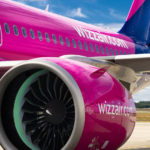Airlines are set to return to profitability, and aerospace manufacturers are gearing up for their most productive years yet, according to a report by Oliver Wyman.
The global management consulting firm has launched its Global Fleet and MRO Market Forecast 2023-2033, revealing that the global fleet is at 98 per cent of where it was pre-pandemic.
The worldwide commercial fleet is projected to expand 33 per cent by 2033 to well over 36,000 aircraft, representing a compound annual growth rate of 2.9 per cent.
Today it numbers almost 27,400, just short of its size in January 2020 — the last month before COVID-19 changed the economy and everyday lives around the globe.
And even with 2022’s Ukraine war, global inflation, and higher interest rates, the in-service fleet still managed to increase 7 per cent between January 2022 and January 2023 year-over-year.
MRO
Aviation’s global aftermarket, which provides the maintenance, repair, and overhaul (MRO) to keep the fleet flying, expanded 18 per cent in 2022 and is expected to grow another 22 per cent this year, topping
$94 billion — a mere 2 per cent below its 2019 peak.
By 2033, it will reach $125 billion — a compound annual growth rate of 2.9 per cent.
Oliver Wyman anticipates a record number of aircraft deliveries over the next 10 years, even though currently supply chain constraints are making it hard to meet this year’s targets.
Despite rising air fares and a year of delays and cancellations in many of the world’s biggest markets, travelers seem undeterred. By December, global passenger traffic — including both domestic and international — reached 82 per cent of the 2019 total. That’s the highest level since the pandemic.
Significant headwinds
However, the Fleet and MRO Forecast also highlights the significant headwinds that the industry continues to face in the next decade, including tight labor markets globally across almost every aviation job category — from pilots and mechanics, to ground crew and air traffic controllers.
Oliver Wyman’s analysis finds that the supply gaps already amount to 18 per cent of the total pilot workforce in 2023 and 14 per cent of aviation mechanics.
Additionally, ongoing production delays linked to supply chain disruption and higher operating costs continue to strain growth projections – price increases have touched everything from jet fuel and salaries to aircraft parts, already putting pressure on airline earnings in 2022.
Despite improved engine efficiency and the anticipated switching out of older, less efficient aircraft for new ones, aviation will likely face rising emissions this decade, given strong demand for air travel and the lack of alternatives to current jet propulsion. And airlines will probably have to contend with stricter rules moving forward.
Lastly, geopolitical tensions, especially with China and Russia, loom large. China’s zero-COVID policy caused lockdowns that cut into supplies of certain aircraft parts and raw materials and closed off MRO capacity to Western airline customers. Meanwhile, Russia’s estrangement from the global community is likely to decimate its fleet with Oliver Wyman predicting a 25 per cent decline over the next 10 years because of the sanctions.
Enormous turbulence
Brian Prentice, partner, Oliver Wyman, and the head of the fleet research study, said: “This industry has been jostled by enormous turbulence since the start of COVID-19, but 2022 proved its resilience. The next 10 years look even brighter as fleets expand to meet growing consumer demand for travel and we see the potential for dramatic growth in emerging markets like India. However, the complex challenges facing the industry are significant, and will require developing innovative solutions to meet the growing demand for air travel.”
Subscribe to the FINN weekly newsletter

